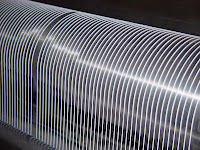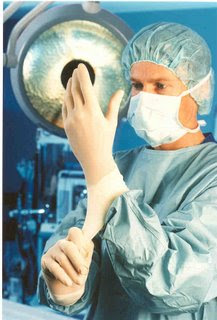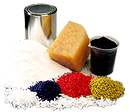 Manufacturer:
Manufacturer: In our study of formulation for low toxicity applications, we invariably come across very confusing medical terms such as Carcinogenicity, Mutagenicity and Clastogenicity. Why should rubber technologists be bothered about this? Your input here would be appreciated.
JohnWoon: Rubber and latex products are continuously being developed to be used in many new applications in varied industries. The individual technologist should therefore equip himself/herself with whatever relevant knowledge there is in a particular industry where rubber products are being used. Many rubber factory workers and consumers are being exposed to such rubber products. It is therefore only natural that the toxicity issue should be scrutinized and studied.
Hence a good rubber and latex technologist should be jacks of all trades and hopefully master of some.
Toxicity study of rubber chemicals and the based rubbers (Polymers) have been studied for many decades and is still being pursued to obtain any new findings. But what's "toxicity"? Simply defined, it is the ability of a substance to cause a harmful effect to human body. As far as rubber products are concerned, this covers carcinogenicity, mutagenicity, clastogenicity including of course primary skin irritation, eye irritation and skin sensitization, not forgetting teratogenicity and nerotoxicity.
The following notes show my simplified explanation of the terms for ease of understanding and wherever applicable, examples of chemicals are included:
1) CarcinogenicityThis is the ability for certain chemical to cause cancer (Please note that the causative agents could be more than one, for instance, radiation and stress) i.e. it has the ability to act on living tissues to cause malignant growth.
This substance or chemical is called a "carcinogen". The biochemical process leading to cancer is termed "carcinogenesis". Of course "Carcinogenic" is the adjective to describe anything that cause cancer.
Examples: Although reported to be very likely non-carcinogenic as they are, most common Zinc dialkyl dithiocarbarmates such as ZDMC, ZDBC and ZDEC have been reported to release carcinogenic N-nitrosamines as by-products after vulcanization. Thiourea is another accelerator that is carcinogenic. Other examples include styrene, butadiene and acrylonitrile used as raw materials in the manufacturing of ABS plastics and Nitrile rubber.
2) MutagenicityThis is the ability of the chemical to cause an increase in the rate of change in genes (subsections of the DNA of the body's cells) or a rearrangement or a gain or loss of part of a chromosome (Remember our biology class in schools? If you've forgotten, "chromosome" is a structure in the nucleus of a cell composed of deoxyribonucleic acid (DNA) and protein; the chromosome forms the basis of heredity and carries genetic information in DNA in the form of a sequence of nitrogenous bases)
Such chemical is known as "mutagen" and the process of mutation is termed "mutagenesis". "Mutagenic" is the adjective for any chemical that could cause mutation.
Please take note that mutagenic substances may also be carcinogenic but a carcinogen might not necessarily be a mutagen.
3) ClastogenicityThis is the ability of the chemical to cause chromosomal breaks.
Such chemicals are called "Clastogens" and the process is termed "clastogenesis".
"Clastogenic" is the adjective applied to any substance or process causing chromosomal breaks.
Example: MBTS (Dibenzolthiazyl disulphide) had been reported to be potential clastogen.
4) TeratogenicityThis is the ability of the chemical to cause non-heritable birth defects i.e. malformations of an embryo or fetus.
Such chemicals are termed "teratogen", some times refered to as "reproductive toxins" while the process is called "teratogenesis". "Teratogenic" is the adjective describing the chemical that causes non-heritable birth defects.
Example: Accelerators such as TMTD (Tetramethyl thiuram disulphide) and MBTS (Dibenzolthiazyl disulphide) had been reported to be potential teratogens. Other possible examples include monomers like acrylonitrile, vinyl chloride and styrene.
5) NeurotoxicityThe ability of a chemical to upset the function of the nervous system.
Example: TETD (Tetraethyl thiuram disulphide), Dinitrosopentamethylene tetramine (Blowing agent), Methanol and IPA.
6) Skin irritation/Skin sensitizationI presume you are familiar with the meaning of these.
Examples: MBT, ZMBT = Possible Skin sensitization, TMTD, TETD, DPG (Diphenyl guanidine)= possible skin irritation and sensitization.
Legislation to protect human health and the environment has been increasing dramatically during the past two decades. Many laws have been enacted to control the carcinogenic and other health risks of industrial chemicals used in a wide range of latex and rubber products, released into the environment, or encountered in the workplace.
All other things being equal, the best bet is to use
prevulcanised latex as opposed to post-vulcanisable latex compound. Generally, the former has lower toxicity.



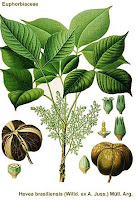






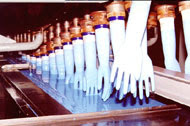
































.jpg)
.jpg)


.jpg)
.jpg)
.jpg)
.jpg)
.jpg)
.jpg)
.jpg)
.jpg)
.jpg)
.jpg)
.jpg)
.jpg)
.jpg)
.jpg)
.jpg)
.jpg)
.jpg)
.jpg)






